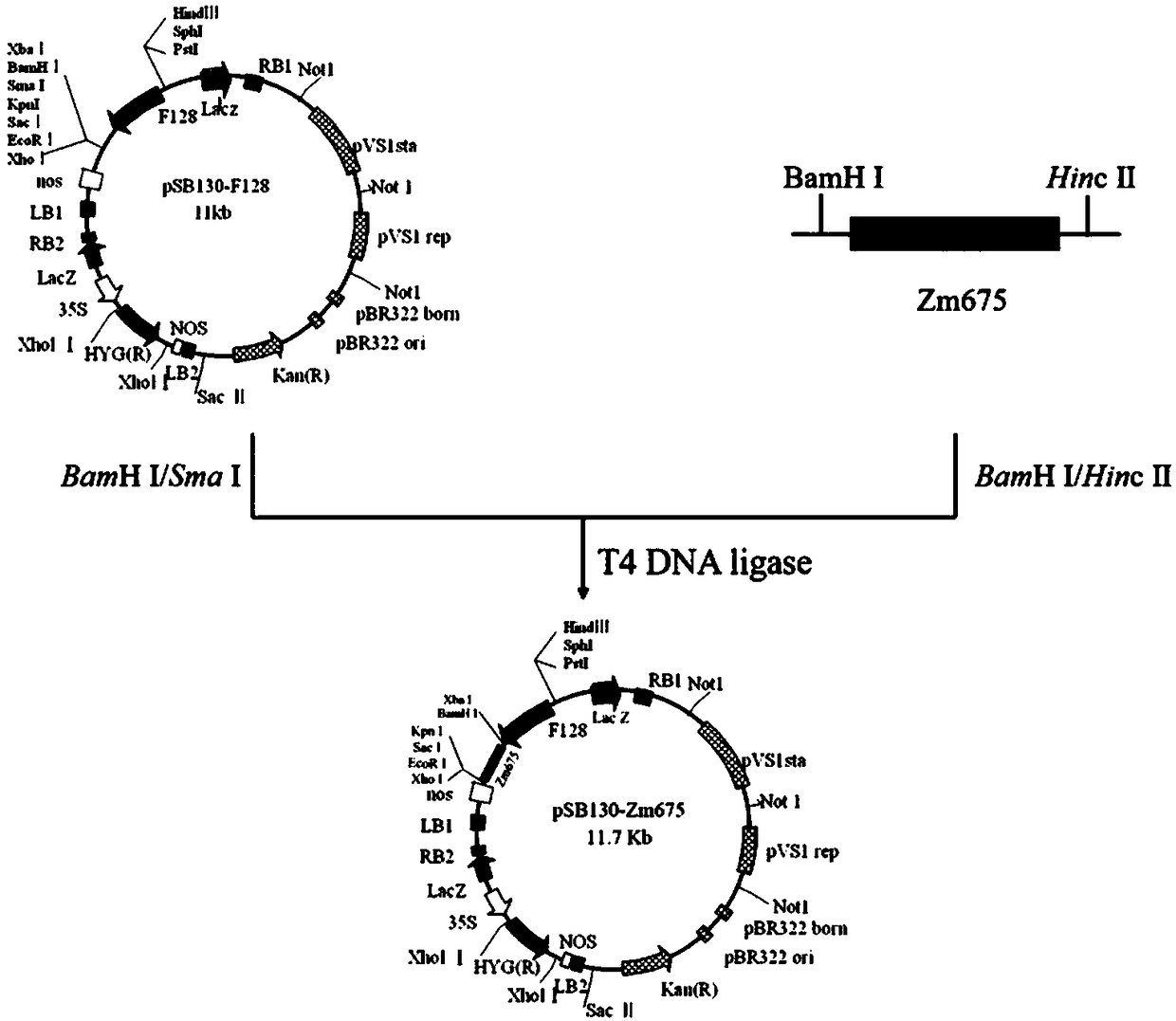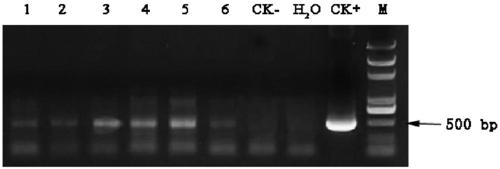Application of maize Zm675 gene in plant quality improvement
A zm675 gene technology, applied in the field of biotechnology and genetic breeding, can solve the problems of reducing content, poor predictability, affecting the development of corn kernels, etc., and achieve the effect of increasing lysine and protein content and improving nutritional quality
- Summary
- Abstract
- Description
- Claims
- Application Information
AI Technical Summary
Problems solved by technology
Method used
Image
Examples
Embodiment 1
[0045] Example 1 Cloning and sequence analysis of Zm675 gene
[0046] Total RNA was extracted from maize inbred line B73, and cDNA was synthesized by reverse transcription with Oligo dT as primer.
[0047] According to the maize genome sequence (maizeGDB: GRMZM2G051675), primers 675-F1 (SEQ ID NO.3): 5'-CACCAGAGGCGATGTCGTC-3' and 675-R1 (SEQ ID NO.4): 5'-TGGTGAGAGCATCTTCAGTC-3' were designed to cDNA as a template for PCR amplification. Reaction conditions: 95°C, 30sec; 58°C, 30sec, 72°C, 30sec, 30 cycles. The amplified product was ligated with the T vector pMD-19T, transformed into Escherichia coli DH5α, and the recombinant plasmid was obtained. Sequencing results show that the cloned Zm675 coding sequence is 669bp in length (as shown in SEQ ID NO.2), encoding 222 amino acid residues (as shown in SEQ ID NO.1), and the lysine content in the encoded protein is 18.56% (w / w).
Embodiment 2
[0048] Example 2 Construction of expression vector pSB130-675
[0049] Zm675 was excised from the above T vector with BamHI and HincII, the plant expression vector pSB130-F128 (ZL201310398102.9) was cut with BamHI and Sma I, and the Zm675 fragment was connected to the vector to construct a recombinant plasmid pSB130-675 ( figure 1 ). This plasmid includes two T-DNAs. T-DNA1 includes a Zm675 expression cassette driven by a millet seed-specific promoter F128 (CN101063139A); T-DNA2 includes an HPT (hygromycin phosphotransferase gene) expression cassette driven by a CaMV35S promoter. After the pSB130-675 vector was successfully constructed, it was transformed into Agrobacterium LBA4404 for the genetic transformation of maize. Agrobacterium transformation was carried out by conventional methods in the art.
Embodiment 3
[0050] The genetic transformation of the immature embryo of embodiment 3 maize
[0051] Preparation of Agrobacterium bacteria liquid: Agrobacterium LBA4404 (pSB130-675) was cultured on YEB solid medium (containing Sm 125 μg / mL, Kan 100 μg / mL) at 28°C for two days and collected the bacteria. Suspend the cells with infection medium to OD 600 After shaking the bacteria at 0.6-0.8, 28°C, 75rpm in the dark for 2-4 hours, dilute the shaken bacteria solution to OD with infection medium 600 Reserve for 0.3-0.4. Using maize inbred line 178 as the transformation recipient, the immature embryos (about 1.5-2.0 mm in size) 12 days after pollination of the 178 inbred line were stripped and infected with an Agrobacterium-free medium, soaked and washed twice. , Pour off the remaining medium, infect the immature embryos with the Agrobacterium solution prepared in advance for 15 minutes, then put the infected immature embryos on sterile filter paper and dry them, transfer them to the co-culti...
PUM
 Login to View More
Login to View More Abstract
Description
Claims
Application Information
 Login to View More
Login to View More - R&D
- Intellectual Property
- Life Sciences
- Materials
- Tech Scout
- Unparalleled Data Quality
- Higher Quality Content
- 60% Fewer Hallucinations
Browse by: Latest US Patents, China's latest patents, Technical Efficacy Thesaurus, Application Domain, Technology Topic, Popular Technical Reports.
© 2025 PatSnap. All rights reserved.Legal|Privacy policy|Modern Slavery Act Transparency Statement|Sitemap|About US| Contact US: help@patsnap.com



